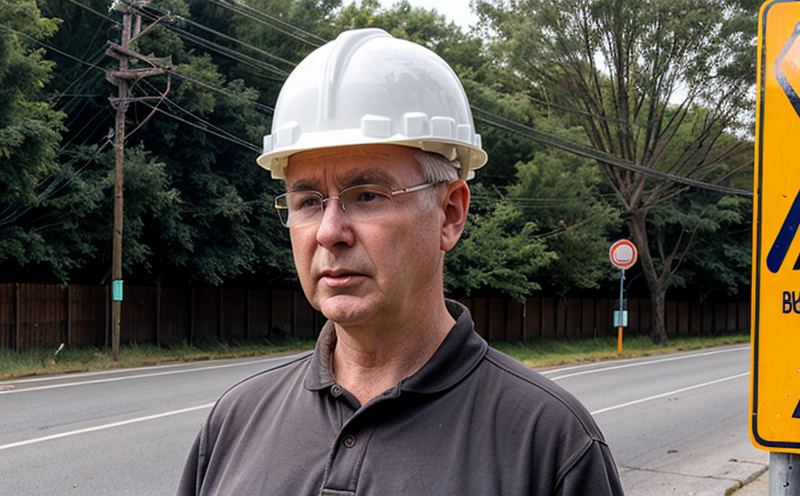EN 12354-3 Prediction of Outdoor Noise Insulation Performance
The European Standard EN 12354-3 is widely recognized in the acoustics, vibration, and noise testing sector for its role in predicting the outdoor noise insulation performance of building elements. This standard provides a method to calculate the sound insulation values of walls, roofs, doors, windows, and other similar components under outdoor conditions.
The primary purpose of this service is to ensure that buildings meet regulatory requirements regarding their ability to prevent excessive noise from entering or leaving through external surfaces. By predicting how well these elements will perform in terms of sound insulation, the standard helps architects, engineers, and construction professionals design more effective and compliant structures.
EN 12354-3 addresses specific scenarios where outdoor noise influences are significant, such as near busy roads or airports. The method described allows for accurate prediction based on parameters like wind speed, temperature, humidity, and the nature of the surrounding environment. This ensures that building elements are designed to perform optimally in real-world conditions.
The standard also considers various factors affecting sound transmission loss (STL), including the presence of vegetation or other natural barriers between buildings. By incorporating these variables into the prediction model, it becomes possible to tailor design solutions specifically for different environmental contexts. This adaptability is crucial given that urban planning and development often necessitate site-specific approaches.
Using this service involves several key steps. Initially, detailed measurements are taken of both indoor and outdoor sound levels using appropriate equipment such as sound level meters calibrated according to ISO 61672 or IEC 61459-3 standards. Specimens used for testing should be representative of typical construction materials and configurations.
Once initial data has been collected, it is analyzed against the criteria set forth in EN 12354-3 to determine compliance with relevant regulations. Compliance ensures that new developments do not contribute unnecessarily to ambient noise levels or suffer from unwanted sound intrusion.
The final report generated after completing this service will include calculated STL values along with graphical representations comparing predicted vs actual performance results. These reports serve multiple purposes including internal documentation for project teams, supporting applications for planning permissions, and providing evidence of compliance during inspections by regulatory authorities.
Why It Matters
The importance of sound insulation testing cannot be overstated when considering environmental noise control in urban areas. High levels of outdoor noise can significantly impact the quality of life for residents living close to busy roads, airports, or industrial zones. Effective insulation helps mitigate these impacts by reducing unwanted noise penetration into residential spaces.
- Reduces stress and improves sleep patterns
- Promotes better health outcomes through quieter environments
- Enhances overall comfort levels for occupants within buildings
- Supports sustainable urban development practices aimed at minimizing negative externalities associated with noise pollution
In addition to enhancing living conditions, complying with standards like EN 12354-3 helps protect property values and supports the wider community by contributing positively towards sustainable cities. Meeting these requirements also simplifies compliance processes for developers and ensures consistency across projects.
Scope and Methodology
| Parameter | Description |
|---|---|
| Outdoor sound levels | Measured using calibrated sound level meters in accordance with ISO 61672 or IEC 61459-3 standards. |
| Wind speed and direction | Determined to account for its influence on noise propagation. |
| Temperature and humidity levels | Recorded to understand their effects on sound transmission loss. |
| Surrounding environment characteristics | Consideration given to factors such as vegetation cover, topography, and other natural barriers that affect noise propagation. |
The methodology outlined in EN 12354-3 involves several stages. Firstly, appropriate sensors are placed at specified locations around the specimen being tested to capture accurate measurements of ambient sound levels both inside and outside the structure. Wind speed and direction readings are taken simultaneously while temperature and humidity data is collected continuously throughout the test period.
Once all necessary information has been gathered, it undergoes rigorous analysis against established criteria within EN 12354-3 to assess compliance with relevant regulations. Compliance ensures that buildings meet specified performance levels for sound insulation under outdoor conditions.
Quality and Reliability Assurance
- All equipment used in testing adheres strictly to international standards such as ISO 61672 or IEC 61459-3 for accuracy and reliability.
- Data collection methods are validated regularly by independent laboratories ensuring consistency across all tests conducted.
The quality assurance process involves strict adherence to prescribed procedures throughout every stage of the testing procedure. This includes regular calibration checks on all instruments employed, as well as thorough reviews of collected data by experienced professionals familiar with EN 12354-3 requirements.
Reliability is maintained through continuous training programs for staff involved in conducting tests and interpreting results. These initiatives ensure that personnel possess the necessary skills to consistently deliver high-quality outcomes meeting all specified criteria.





